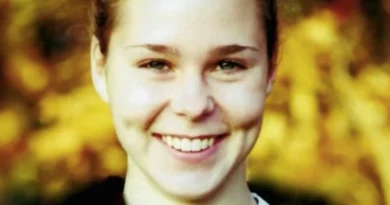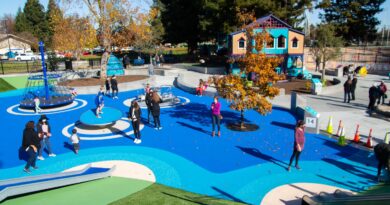Jenny Pratt Brutally Attacked with 2×4 Lumber in Carlsbad California
Jenny Pratt was born in the summer of 1970 to Diane and John Pratt, lifelong residents of Carlsbad, California. Raised alongside her younger brother, Michael, Jenny grew up in a modest single-story home just blocks from the Pacific shoreline. Her parents both worked locally—Diane as a school librarian and John as a junior high science teacher—and instilled in their children a strong work ethic and community focus. From an early age, Jenny displayed a natural charisma, easily making friends at Laguna Riviera Elementary and earning praise from teachers for her lively participation in class discussions and school plays .
San Dieguito High and Social Circle
By the time she entered San Dieguito High School in the fall of 1985, Jenny had become an integral part of the Wildcat community. She joined the drama club, took on small modeling jobs for local boutique fashion shows, and volunteered for beach clean-ups with her church youth group. Socially, Jenny was popular yet compassionate—often seen consoling classmates under stress with schoolwork or family challenges. Her boyfriend, 18-year-old Curtis Croft, admired her “infectious zest for life,” and the two were inseparable partners in both study sessions and weekend outings .
Prelude to the Tragedy
In the weeks leading up to April 1987, Carlsbad saw a rise in late-night cruising teens, a byproduct of increased disposable income and loosened parental curfews. Local police logs show an uptick in noise complaints and minor vandalism, but nothing that foreshadowed the violence Jenny would soon endure. That spring semester, Jenny aced her midterms, dazzled her classmates in a regional theater production of Grease, and planned a summer modeling audition in Los Angeles. Unbeknownst to her family, certain local youths—jealous of Jenny’s success and her closeness with older peers—had begun to view her as a target for malicious pranks .
The Night of April 25, 1987
Shortly after 10 PM on April 25, 1987, Jenny and Curtis borrowed a friend’s Harley-style motorcycle for what they described as “a quick spin” to clear their heads after a stressful week. While waiting at the stop sign on Montgomery Avenue by College Boulevard—an intersection lit by a single streetlamp—Curtis noticed dust kicking up behind a speeding white pickup. Eyewitness accounts and Curtis’s own testimony later confirmed that the truck drew level, then a figure in the passenger seat violently flung a 6½-foot piece of 2×4 lumber directly at Jenny’s head. The impact “sounded like a gunshot,” Curtis recalled, and Jenny slumped unconscious to the pavement. He felt a glancing blow to his right shoulder but managed to stay conscious long enough to dial 911 .
Paramedic and Hospital Response
Paramedics arrived within seven minutes, finding Curtis cradling Jenny’s head and attempting rudimentary first aid. They stabilized her with a cervical collar, loaded her onto a stretcher, and called for an air evacuation. A Bell helicopter landed on the high school football field, whisking Jenny to Scripps Memorial Hospital in La Jolla. There, neurosurgeons performed an emergency craniectomy to relieve intracranial pressure. Despite the brutal nature of the skull fracture—bone fragments had penetrated brain tissue—she was stabilized in intensive care. Doctors grimly informed Diane and John Pratt that Jenny’s brain had “effectively shut down” and gave her “hours, not days,” to live .
Medical Prognosis and Stabilization
Remarkably, Jenny’s vital signs improved over several tense hours. Her brain swelling plateaued, and she exhibited reflexive responses—finger squeezes and pupil constriction—suggesting minimal brain stem function. After 48 hours, she was transferred from the ICU to a specialized neurological ward for continued monitoring. A CT scan revealed hematomas had receded and that, while large areas of the frontal lobe were irreparably damaged, enough intact tissue remained to allow potential recovery. Doctors cautioned the Pratts that even a full awakening would likely leave Jenny with severe cognitive and motor deficits .
Forensic and Police Investigation
Carlsbad Police Department’s Homicide and Assault Unit, led by Sergeant Jim Byler, treated the case as attempted murder. Crime scene technicians recovered the blood-soaked 2×4, which bore only Jenny’s DNA and smudged blood patterns—no fingerprints or tool-mark impressions. Officers canvassed nearby residences and local hangouts, distributing photos of a white Ford F-150 seen fleeing the scene, but leads repeatedly ran cold. Investigators interviewed more than thirty teens in Carlsbad’s coastal districts, yet every potential witness claimed ignorance or offered conflicting descriptions of the vehicle and its occupants .
Curtis Croft’s Eyewitness Testimony
Curtis endured repeated police interviews in the months that followed, each time recounting the same critical detail: he saw a group of three teenagers—two boys and a girl—laughing in the truck bed just before the board was thrown. He remembered overhearing a taunt, “Watch her head spin,” moments before loss of consciousness. Despite his emotional trauma, Curtis remained a steadfast witness. However, after an initial identification in a photo line-up produced no matches, he told police the juvenile suspects “felt like classmates” but he could not be certain. His uncertainty under cross-examination diminished prosecutorial confidence .
Ongoing Police Efforts and Community Obstacles
Over subsequent years, the Carlsbad PD reopened the file whenever tips surfaced—reinvestigating old witnesses, retesting trace evidence with evolving DNA methods, and reissuing public appeals through local media. Community relations, however, remained fraught: parents discouraged teens from cooperating, fearing embarrassment or retaliation. The tight-knit beach community prided itself on loyalty, and many older residents quietly pressured law enforcement to “let sleeping dogs lie,” arguing that the statute of limitations on felony assault (four years in California) would have long since expired .
Private Investigator Louie Crisafi’s Work
Frustrated by stalled progress, Diane and John Pratt hired former detective Louie Crisafi in early 1988. Crisafi conducted his own reenactments—testing various throwing angles and velocities—ultimately determining that the board was hurled from a height consistent with truck bed passengers, not tailgate occupants. His team gathered rumors of pre-existing conflicts between Curtis and certain classmates, including a recent scuffle at a high school dance. Under family pressure, Curtis provided names of two alleged perpetrators; within days, however, Curtis recanted, citing whispered “warnings” that speaking further would imperil his safety. Crisafi’s subsequent attempts to locate corroborating witnesses unraveled when key individuals refused to answer his calls .
Legal Challenges and Statute of Limitations
By the late 1990s, prosecutors concluded that the window for criminal prosecution had closed—even if the assailants were definitively identified. California law in 1987 set a four-year statute for felony assault, and without an admission of guilt or confessions secured under oath, any indictment would be barred. The Pratts explored civil suits but faced similar deadlines on personal injury claims. Attempts to lobby the state legislature for retroactive extensions failed. Their attorneys advised that, barring a confession, the best avenue was to keep public attention alive in hopes that a previously reticent witness might eventually come forward .
Community Mobilization and Public Appeals
In the wake of the attack, Carlsbad’s civic and religious organizations rallied behind Jenny. Local churches held prayer vigils, and the Carlsbad Unified School District organized assemblies on non-violent conflict resolution. In early 1989, Diane Strom spearheaded a “Walk for Jenny” fundraiser in downtown San Diego, raising over $20,000 toward Jenny’s mounting medical bills. When Unsolved Mysteries producers contacted the family for participation in December 1988, community leaders saw a chance to amplify calls for justice. Flyers distributed at beach volleyball courts and surf shops carried photos of the attack board and a plea: “You know who did this—please come forward” .
Media Exposure and Unsolved Mysteries’ Role
The December 1988 segment of Unsolved Mysteries, narrated by Robert Stack, dramatized Jenny’s plight—interviewing her parents, Dr. Thomas Miller (the attending neurosurgeon), and Coach Bill Hernandez of San Dieguito High. A dramatic reenactment showed the pickup approaching, the projectile arcing through moonlit air, and paramedics rushing Jenny away. The feature garnered over 20 million viewers, prompting a flood of tips—some credible, most not. A follow-up “Update” aired in February 1990, noting that none of the names tentatively floated in viewer mail had produced prosecutions .
Therapeutic Interventions and Rehabilitation Journey
Jenny’s recovery spanned multiple disciplines. In La Jolla, she spent six months at the Scripps Neurological Rehabilitation Center, working daily with speech-language pathologists on vowel differentiation and phoneme articulation. Occupational therapists employed constraint-induced movement therapy to strengthen her right arm, immobilizing the left for several hours a day to encourage neuroplasticity. Balance and gait training in physical therapy sessions began with static standing, progressing to treadmill walking with partial body-weight support. By March 1988—eleven months post-attack—Jenny took her first unassisted steps, a milestone celebrated by hospital staff and local press .
Where’s Jenny Today?
As of a 2011 status update on the Unsolved Mysteries Facebook page, Jenny resides in a licensed group home in North County San Diego. While she has regained much of her physical health, she continues to require 24/7 support for the cognitive and emotional impairments resulting from her traumatic brain injury .
She participates in day programs emphasizing life skills: meal preparation, basic budgeting, and community socialization. Though her physical abilities approach normalcy—she maintains good cardiovascular health through daily walks—she continues to struggle with short-term memory lapses, executive function deficits, and emotional regulation. Staff support includes quarterly neuropsychological evaluations and tailored cognitive exercises aimed at preserving remaining function .
Psychological and Emotional Impact
The psychological toll on Jenny and her family has been profound. Jenny’s altered personality—often described as “distant” and “childlike”—contrasts sharply with her pre-attack vivacity. Diane Pratt has spoken publicly about “mourning the daughter we lost and learning to love the one who came back.” Curtis Croft, haunted by survivor’s guilt, relocated to Northern California and works as a firefighter—crediting his experience with Jenny’s attack for inspiring his career in emergency services. Both maintain therapy and support groups to process trauma and foster resilience .
Legacy, Cold Case Status, and Calls for Justice
Decades on, Jenny Pratt’s 2×4 assault remains emblematic of unsolved youth violence. The Carlsbad PD Cold Case Unit reviews the file annually, incorporating advances in forensic science—blood spatter analysis software, synthetic fingerprint recovery, and more sensitive DNA profiling techniques—but no breakthroughs have emerged. The case is closed to new criminal filings due to statutory limits, yet officers encourage informants to step forward, stressing that while prosecution is barred, “moral accountability” can still be sought. Jenny’s story continues to feature in local true-crime podcasts and high school curricula on non-violent conflict resolution—ensuring that her tragedy is not forgotten and that the phrase “the one missing link” retains its power to compel testimony .
Discover more from City Towner
Subscribe to get the latest posts sent to your email.




